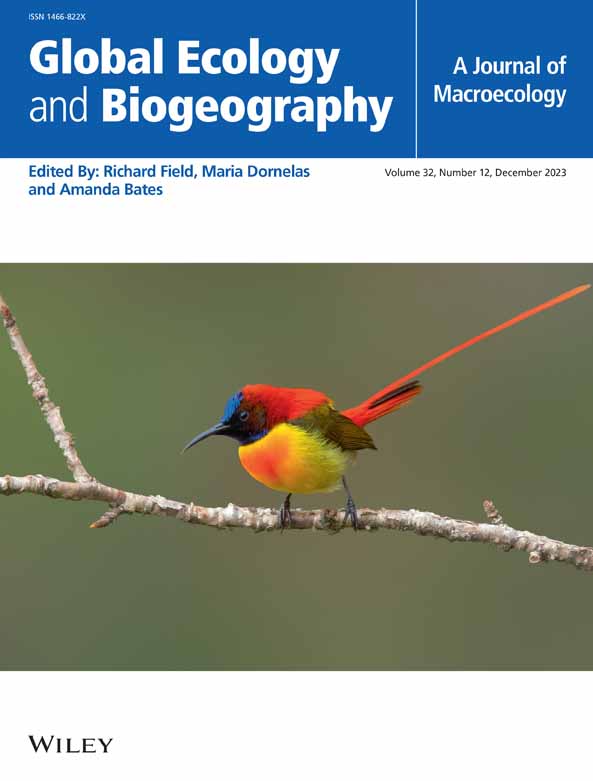How Environment Affects Ontogenetic Differences in Leaf Functional Traits of Woody Plants
Abstract
Aim
The consistency of patterns in ontogenetic differences in plant traits across the globe has not been thoroughly studied. Environmental conditions affect leaf functional traits, and these effects can differ between adult trees and saplings due to varying environmental conditions in their aerial and soil environments. Our integrative analysis aims to reveal the global universality of woody plants' ontogeny and explores influencing factors.
Location
Global.
Time Period
Studies published in 1989–2023.
Major Taxa Studied
Woody plants.
Methods
We performed a global meta-analysis of woody plants with different plant functional types at 64 sites around the world, assessed the ontogenetic differences in nine key leaf traits and explored the environmental factors that affected the ontogenetic differences.
Results
We observed that (1) leaf traits differed significantly between adult trees and saplings, with environmental factors playing varying roles. Photosynthetic capacity per unit area (Aa) and nitrogen content per unit dry mass (Nm) were lower in saplings than in adults under low solar radiation, but this trend reversed with increased solar radiation. Differences in stomatal density (SD) and stable carbon isotope composition (δ13C) between adults and saplings were greatest under low solar radiation; (2) ontogenetic differences in leaf thickness (LT), leaf dry mass per area (LMA) and stomatal conductance (gs) were greater at lower mean annual temperature (MAT); (3) at high mean annual precipitation (MAP), adults had higher nitrogen content per unit area (Na), while saplings had higher Nm than adults; (4) soil conditions were strongly correlated with ontogenetic differences in LT and SD, with soil pH as a key driver of variation in Aa, LT, SD, Na and Nm.
Main Conclusions
Our findings indicate that ontogeny strongly modifies leaf functional traits and that multiple environmental factors influence the magnitude of ontogenetic differences in leaf traits. This underscores the importance of considering ontogeny when predicting trait values across plant developmental stages, modelling vegetation composed of individuals of different ages and forecasting vegetation responses to environmental changes.


 求助内容:
求助内容: 应助结果提醒方式:
应助结果提醒方式:


